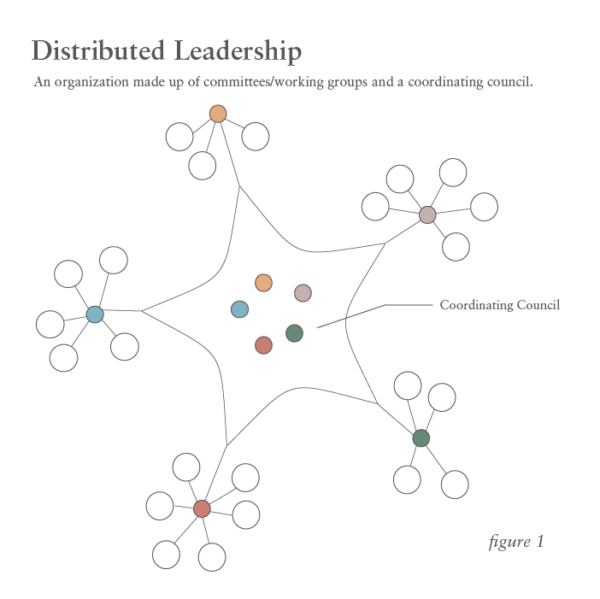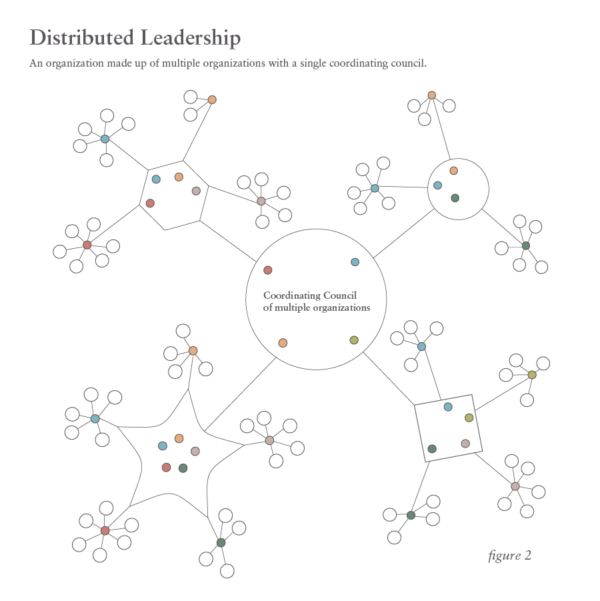Distributed Leadership Structure:
ACI was a not-for-profit business association, founded in 1971. When incorporated these legal documents were required: Articles of Incorporation, Bylaws, Whistle-blower policy, Conflicts of Interest Policy.
Other than this superstructure, the organization operated as a Distributed Leadership model and with democratic principles. Lacking a hierarchy encouraged active membership and shared responsibility.

How it functioned:
1. Standing and Short-Term committees managed all aspects of the organization.
2. Coordinating Council: The CC consisted of representatives from each of the standing committees (e.g., Programs, Peer Consultation and Peer Review).
Representatives from the committees rotated to the Coordinating Council (CC) to provide synchronization, and make any decisions in clear alignment with the organization’s purpose and goals.
For the purposes of the non-profit registration a Finance Committee member was named Treasurer. Someone took the formal roles of President and Secretary on the document; functionally the “president” paid attention to calling Coordinating Council (CC) meetings and the “secretary” filed the meeting facilitator’s report as minutes.
3. Every two years the entire membership gathered for a “Whither ACI?” facilitated discussion.
The agenda was primarily Open Space. People came with what they wanted to discuss, and then the topics were arranged to fit the time slots available. Possible programs were announced and scheduled. A decision was made to sponsor a major figure in the field to come and teach cutting edge explorations.
A meeting could be called by the CC for discussion of any intermittent issues.
4. Decision making process:
There was never a voting process. If people reached concordance the change was accepted as a new norm or behavior. When strongly opposing values emerged around a decision:
1. Individuals stated their values as clearly as possible, and reflective silence followed. The facilitator needed to be both skilled and able to wait while people considered their positions.
2. If consensus could not be reached, strongly opposed members formed a short-term committee to work out a solution and present it to the full membership. If consensus on the issue could not be reached in the committee, individuals initiate a preferred action but it was not an ACI initiative.


